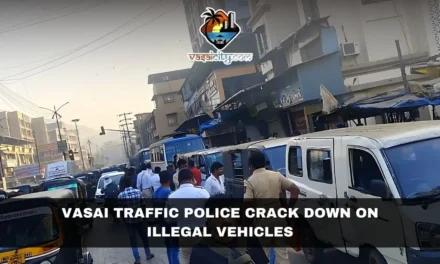In the bustling community of Vasai-Virar, nestled in the throes of rapid growth and urban development, a story unfolds that touches on the vital resource of water and the complexities of managing its distribution and taxation. This tale is not just about numbers and policies but about the challenges and triumphs of a municipality striving to meet the needs of its citizens while navigating through a myriad of responsibilities.
In the financial year spanning 2023 to 2024, the Vasai-Virar Municipal Corporation found itself grappling with a significant shift in its water tax collection narrative. A figure that might seem abstract at first glance—60 crores—actually represents a substantial dip from the preceding year’s collection, marking a 10 crore decrease. To put it into perspective, imagine a large pot filled to the brim with the community’s contributions, only to find it noticeably less full this year, despite the ever-growing thirst of a burgeoning population.
The drop in water tax revenue, as stark as it may appear, is intertwined with the rhythm of municipal life, where employees, the unsung heroes behind the scenes, juggle a plethora of tasks. This past year, their attention was divided, stretched thin by election duties and the implementation of various government schemes, revealing the delicate balance between routine administrative tasks and the unpredictable waves of civic responsibilities.
Vasai-Virar is a place of contrasts, where tradition meets modernity, and the natural bounty of water from two significant projects—Dhamani (Surya) and the triad of dams, Pelhar, and Usgaon—melds with the challenges of urbanization. This year, the taps flowed a bit more freely, with an additional 165 MLD (Million Liters per Day) of water coursing through the city’s veins from Surya, enhancing the supply to meet the burgeoning demand.
The story of water in Vasai-Virar is not just about quantity but accessibility. After a three-year hiatus, February 2024 saw the municipality reignite its efforts to extend the water network, adding new connections to quench the thirst of its growing population. With over 52,000 connections laid in the preceding years, and more on the way, the challenge was not just to supply water but to ensure it reached every tap, every home, every citizen who relied on this essential resource.
The fiscal year of 2023-24 was marked by a concerted push from the municipality to recover water tax, aiming to bridge the gap in revenue. Despite a promising start, with half of the targeted recovery achieved by February, the task was daunting. The introduction of additional water supply from Surya brought with it new policies and prerequisites for obtaining new water connections, adding layers to the already complex process of managing water distribution and taxation.
As the year unfolded, it became evident that certain areas within the municipality showed varying levels of compliance and cooperation. Virar East emerged as a leader in water tax recovery, contributing a commendable 11 crores, while other areas lagged behind, highlighting the disparities within the community and the challenges faced by the municipality in ensuring equitable distribution and compliance.
The previous year’s collection of 70 crores loomed large over the municipality, serving as a reminder of what was possible and the gap that needed to be bridged. The decline in collection was attributed to the overwhelming workload shouldered by the municipal employees, a testament to the multifaceted challenges of municipal governance.
In a decisive move to address outstanding dues, the municipality issued notices to residents with water bill arrears exceeding 5,000, leading to the disconnection of 275 water connections as a last resort. This action underscored the municipality’s commitment to ensuring compliance and fairness in the distribution of water resources, even as it navigated the complexities of urban management and service delivery.
The story of water tax collection in Vasai-Virar is more than a tale of numbers; it is a narrative of a community striving to balance growth with sustainability, demand with supply, and the needs of the many with the realities of municipal governance. As the city moves forward, the lessons learned and the challenges overcome will serve as stepping stones towards a future where water, the source of life, is accessible to all, managed wisely, and valued as the precious resource it is.









